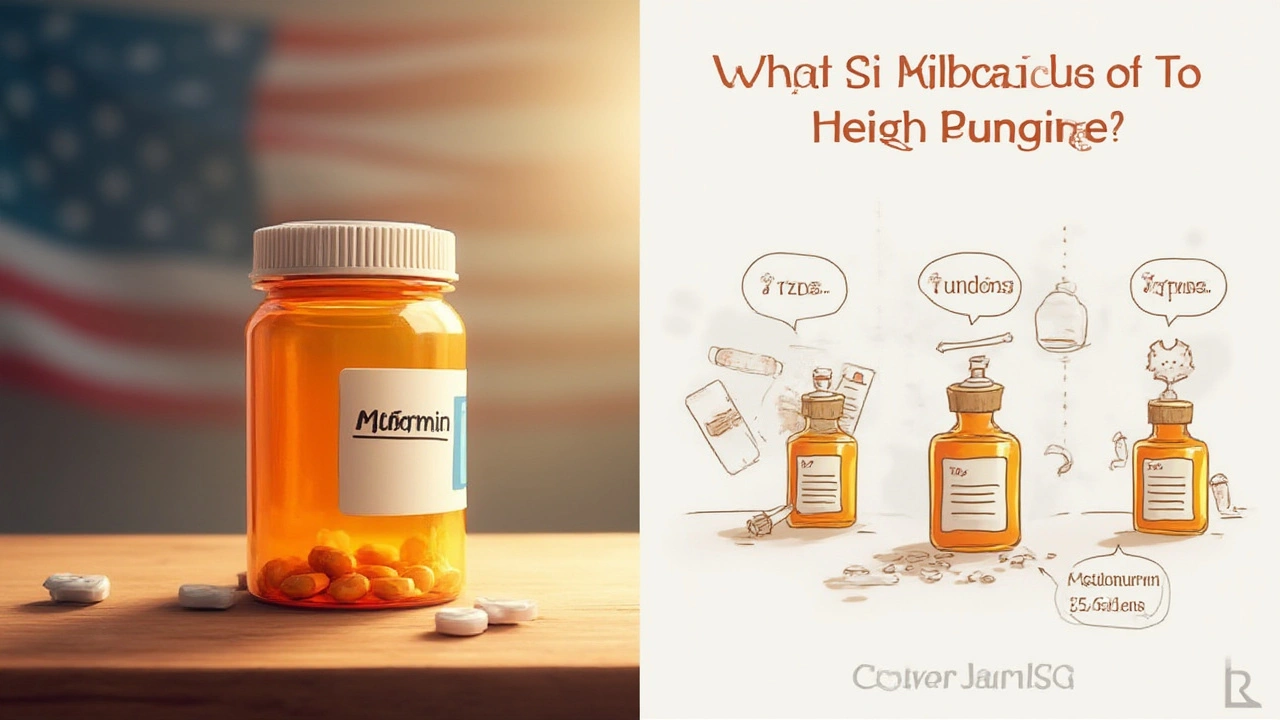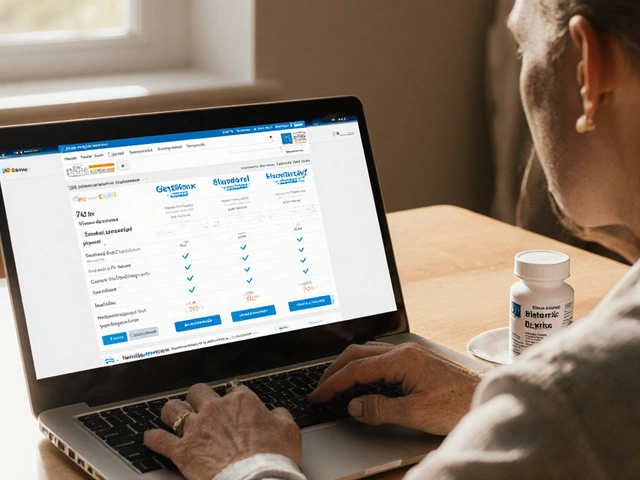Does your doctor want you to stop taking metformin? Or maybe your stomach just can't handle it anymore? You're definitely not alone. The search for a good metformin substitute has become a hot topic in clinics everywhere. What you might not know is that the big-name alternatives—sulfonylureas, thiazolidinediones (yep, those tongue-twisters are called TZDs), and the newer oral semaglutide—all come with their own set of trade-offs. Some are gentler on your gut, some come with extra blood sugar firepower, and some cost way more than others. There are no perfect swaps, but when you know the facts, picking the right pill gets a lot easier. Let’s get into the nitty-gritty of how each option stacks up.
The Longevity of Sulfonylureas: Pros, Cons, and Modern Perspectives
Sulfonylureas are classic in the diabetes world. Glipizide, glyburide, and glimepiride are probably popping up in your head if you’ve ever talked diabetes meds with your doctor. These drugs have been around longer than most people with type 2 diabetes today. They work by making your pancreas pump out more insulin. Simple, right? That’s their superpower—and their downside.
The fact is, sulfonylureas drop blood sugar fast, and for a lot of folks, they work almost too well. Hypoglycemia (that’s low blood sugar) is more common with these drugs than with just about anything else in this group. For some people, it only takes a missed meal to end up shaky, sweaty, and confused. But if you’re really struggling with high blood sugar and need a fast fix, these pills can do the job without costing an arm and a leg—they are some of the most affordable diabetes medicines ever made. Here’s a quick real-life example: A 62-year-old patient in the clinic didn’t tolerate metformin and needed a low-cost fix. Glipizide had her HbA1c down from 9.0% to 6.8% in three months—impressive, but she still had a few scary lows now and then.
Another thing about sulfonylureas: they don’t help with weight loss. If anything, most people notice they gain a little weight on these medications. Also, these drugs lose their punch after a few years, which means the pancreas can become "tired" and stop responding as much. Studies show about half of people need to add or switch drugs within 5 years. On the other hand, there’s a huge comfort in knowing you’re taking something your doctor (and their mentor, and their mentor’s mentor) has prescribed for decades.
So, who’s a good fit for sulfonylureas? People who can eat regular meals, don’t have a high risk of severe lows, and want a cheap and effective short-term fix. If you’re prone to skipping breakfast or have a job that keeps your eating schedule random, think twice.

Thiazolidinediones (TZDs): Less Known, Still Effective, but Worth the Risk?
If sulfonylureas are the old reliable, TZDs are the dark horse in the metformin substitute race. Pioglitazone and rosiglitazone are the names to watch here. These meds are all about making your body’s own insulin work better by reducing insulin resistance—especially in muscle and fat. That’s a win for people whose bodies have plenty of insulin but just aren’t listening.
Since their peak popularity in the early 2000s, TZDs have gotten a lot more scrutiny. Why? The headlines about heart risks and fluid retention hit hard. For rosiglitazone, there was concern about higher heart attack risk, though some of those worries have cooled off with follow-up research. Pioglitazone, on the other hand, might actually protect against strokes in people with high heart risk, according to the IRIS trial, but it isn’t for everyone. It can cause you to hold onto fluid, which raises the risk of heart failure, especially if you already have a weak heart.
TZDs shine for people with a specific problem: insulin resistance. If you have a big belly, fatty liver, or a family history of "stubborn" blood sugars, pioglitazone may be a hidden gem. Fun fact—pioglitazone is one of the few diabetes meds proven to reverse fatty liver in clinical trials. And unlike sulfonylureas, you’re less likely to get hypoglycemia from these drugs, especially if you take them without another secretagogue like insulin or a sulfonylurea.
Downsides? Yes, there are a few. TZDs can lead to weight gain (sometimes as much as 5–10 pounds in a year), swelling in your legs, and increased risk of bone fractures. They’re also not the best choice if you’re a postmenopausal woman with osteoporosis. Some specialists are still careful because they've seen rare cases of bladder cancer linked to long-term, high-dose use. Cost-wise, these drugs went generic a while ago, so they’re pretty affordable for most people with insurance or a savings card.
This group is underused, but in the right person, they work wonders—especially when metformin is out of the picture. Just keep an eye on your weight, your heart, and your bones.

Oral Semaglutide: A Newcomer With Impressive Data (and a Price Tag)
If you think swallowing a pill that does what insulin injections used to do sounds like science fiction, welcome to the oral semaglutide era. Brand name Rybelsus is the first GLP-1 receptor agonist in pill form—no more weekly shots. This drug works by boosting your own insulin release after you eat, slowing down your stomach, and even making you feel less hungry. It also probably gets you a bit of weight loss, which beats what sulfonylureas and TZDs offer for sure.
Let’s talk stats. In head-to-head studies, oral semaglutide has lowered A1c by 1.0%–1.5%—comparable to top-shelf diabetes meds and sometimes a shade better. The weight loss isn’t as big as you get with injectable semaglutide (Ozempic or Wegovy), but people usually lose 4–7 pounds on average. Coronary protection? It might just provide a little extra, though the data is still catching up to the injectables, which have proven heart benefits.
So, what isn’t great about it? Price, for one. Rybelsus can cost hundreds of dollars a month if your insurance doesn’t cover it. Gastrointestinal side effects are also common—think nausea, burping, feeling full, or sometimes diarrhea. A few patients even struggle to keep it down in the morning, since you have to swallow it on an empty stomach with just a sip of water, waiting at least half an hour before eating or taking other meds. Get that routine wrong and the absorption tanks; the pill barely works. Another catch: this






Metformin can be a pain for the gut, so a lot of folks end up looking at sulfonylureas as a cheap backup. They work fast but you gotta watch those lows if you skip meals.
July 23Derek Dodge